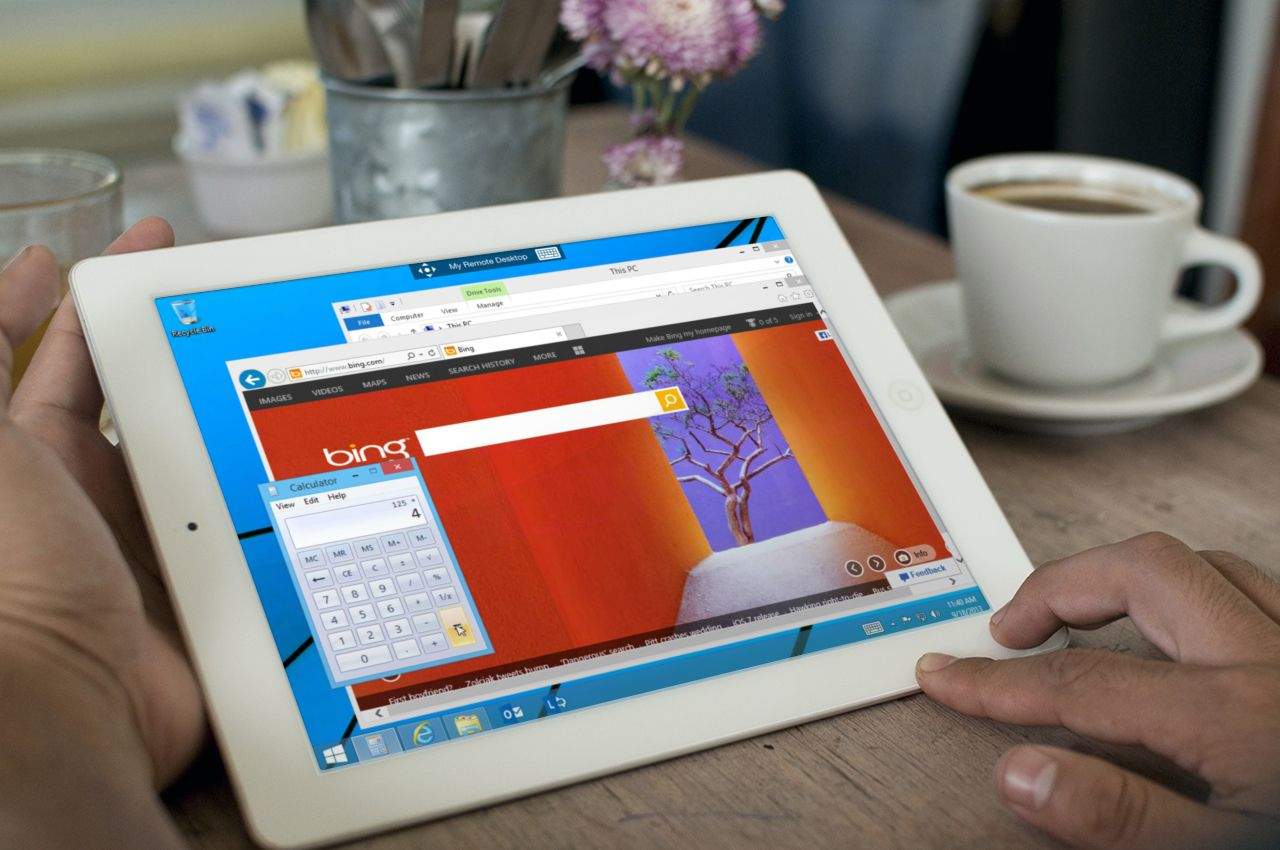

- #MICROSOFT REMOTE DESKTOP FOR IPAD ANDROID#
- #MICROSOFT REMOTE DESKTOP FOR IPAD PC#
- #MICROSOFT REMOTE DESKTOP FOR IPAD BLUETOOTH#
On Android, there's a graphics acceleration option (you can choose "hardware" or "software") that I didn't see in the iOS edition.
#MICROSOFT REMOTE DESKTOP FOR IPAD ANDROID#
The iOS and Android versions that I tested vary slightly. I suspect the results may vary widely depending on the hardware you're using. Audio streamed from the remote machine came through OK, but playing back 1,080p video was too laggy to be useful, even on a local LAN. Microsoft claims "high quality video and sound streaming with improved compression and bandwidth usage" for the app. Maybe Microsoft can add this as an option in a future version? Time and again I caught myself trying to pinch-zoom both in and out of a remote view, but no dice. What's really inexplicable is the way neither client version supports pinch-zoom as a workaround. It's somewhat clumsy on a smaller screen, as a lot of dragging is required to get around. To scroll around, tap on a four-way arrow icon near the middle of the screen and drag in the direction you want to move the viewport to. Tap an icon at the top of the screen and you get a zoomed-in view of a portion of the remote screen.
#MICROSOFT REMOTE DESKTOP FOR IPAD PC#
Use Microsoft Remote Desktop for iOS to connect to a remote PC or virtual apps and desktops made available.

To help offset this, Remote Desktop has a zoom function. The Microsoft Remote Desktop app has been updated with iPad mouse and trackpad support. But for a phone - such as my HTC One, which sports a 1,080-line HD display - this can result in serious eyestrain. For a device like the iPad or an Android tablet, with its relatively large screen, this isn't a bad idea.
#MICROSOFT REMOTE DESKTOP FOR IPAD BLUETOOTH#
Attached Bluetooth keyboards, such as on my iPad Mini, also work.īecause your local device and the remote desktop are likely to be at different resolutions, Remote Desktop tries to set the remote system to use the display resolution of the local device. For typing, the program provides you with the native onscreen keyboard in iOS or Android, albeit with additions for sending special keys. To use the mouse, swipe with a finger and tap to click, and long-press to simulate a right-click. Once connected, you're presented with the remote computer's screen and can pass mouse gestures and key commands. Remote Desktop works a lot like its Windows counterpart: It connects to any Windows PC that can support a Remote Desktop connection and is accessible through a network. on iPad using Microsoft Remote Desktop version 8.241712, we connect successfully to a remote PC (Windows 10 1607). (No version for Windows Phone has been released yet, but Microsoft has stated it is working on one to be released later.) (I know - I've tried.) Microsoft's official solution is not quite as ingenious or convenient to work with as I'd hoped it would be, but it gets the job done. Until now, people had to make do with a patchwork of third-party programs - some good, some bad, and some abysmal. After what seemed like an absurd amount of time, Microsoft has released the first official Remote Desktop client for iOS and Android.


 0 kommentar(er)
0 kommentar(er)
